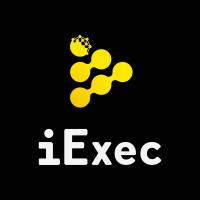Descrption:Populous is a blockchain-based bill financial transaction system that uses XBRL data, credit Score and bankruptcy formula. It contains technologies such as Altman z-score, which can be used for in-depth credit risk analysis of potential target borrowers, including data of their affiliates and their clients.
Populous
v1
Principle and design goals
XBRL (eXtensible Business Reporting Language) is a global standard for exchanging business information and is freely available to anyone. It is developed and published by XBRL International, Inc. and it is used to define and exchange financial information. Companies submit financial statements to government regulators each year using the XBRL reporting format which standardises these data so they can be reviewed and compared regardless of geographic origin.
HM Treasury made it a requirement to file all annual accounts and corporate tax returns in XBRL format in April 2011 (GOV.UK, n.d.). Following the announcement of this requirement, approximately 1.9 million companies now file annual accounts and corporate tax returns in this format to UK Companies House and HM Revenue and Customs (XBRL, 2015).
HM Revenue and Customs uses XBRL data to assess annual accounts and tax returns, helps guide tax risk and policy decisions, judge the consequences of legal challenges and gain a better understanding of the business. The government has indicated that the implementation of XBRL filing have been extremely successful.
5
Technology implementation
Consensus mechanism
Accounts and transactions
Smart contract system
The transparency of events along the supply chain via the Blockchain is itself a major enabler of faster payments and improved financing, increased efficiency, reduced risk of fraud, and lower costs. Exchanging information related to these events in a distributed ledger facilitates trigger events that need to take place for goods to arrive at their final destination and for suppliers to receive payment. But the capability of the Blockchain to facilitate these trigger events does not end with the mere exchange of information along a supply chain.
The use of smart contracts to not only trigger events but actually carry them out automatically represents a bold evolution that is being actively explored by a few today. Smart contracts are self-executing computer codes that automatically carry out functions once a triggering event has taken place. It is a linear contract that can include multiple parties (investors, borrowers, buyers, sellers etc.) and that cannot be altered (EBA Association, 2016).
For example, if a smart contract is written between an invoice seller and an invoice buyer to say that once the invoice buyer is victorious in a crowd funding process, 80% of the funds will be released to the invoice seller, a smart contract would automatically disburse payment once confirmation is entered into a distributed ledger that the crowd-funding process as closed. The confirmation of approval by the crowd-funding process is not a triggering event requiring action by a bank; the payment is automatically made once confirmation has been entered into the system.
With a smart contract, legal stipulations are embedded in the computer code, which enables the automatic execution of functions defined by a legal contract. It also provides protection against duplicate invoice financing, as the contract will not allow for an invoice that has already been financed to receive additional financing. A smart contract, therefore, acts as an application layer that is built on the Blockchain.
The development of the Blockchain that supports the smart contracts we are developing is already built and readily available and globally known as Ethereum Virtual Machine ‘EVM’ in a number of countries. Some see smart contracts as the future of the Blockchain, as they enable more efficiencies in legal contracts through a decrease in manual processing and initiation of contract terms, risk reduction through the elimination of manual errors and duplicate invoice financing, which could make value propositions such as micropayments more feasible.
Cryptography
Distributed storage protocol
Cross-chain and exchange technology
Special technology
Economic model and incentive
The cost of credit insurance can sometimes rise up to 3% for an invoice seller with an invoice value of £100,000. With the implementation of our XBRL system, we see a reduction in this cost for an invoice seller, whose invoice is valued at £100,000. Our approach to credit risk analysis will lead to better understanding of the industry as a whole when making crucial credit decision as well as finding investment opportunities for our invoice buyers and funding for our invoice sellers.
The use of credit reference agencies and third party data providers will be minimal as we are currently aware that major data providers such as Dun & Bradstreet, Experian etc. are yet to implemented XBRL and still rely on predated methods of compiling their data, which would bear a huge burden on an invoice factoring platform budget should they wish to perform analysis at will which is demonstrated earlier on in this whitepaper.
With an overall reduction in the cost subscription to third party services and the reliance on third party data, our resources can be put to greater use in bringing potential customers to the platform and creating value for invoice buyers on the platform.
Governance mechanism
Applications
Contributors
No contributors information for the version. to see perfessional version!
Comment
| Rank | Blochchain | Similarity |
|---|---|---|
|
1st
|
ETHOS
|
29.0256511111111% |
|
2st
|
ENJ
|
24.516725% |
|
3st
|
NPXS
|
23.263255% |
|
4st
|
DCN
|
22.912585% |
|
5st
|
ICX
|
22.358725% |
No analysis results for the version. to see perfessional version!
| Rank | Blochchain | Similarity |
|---|---|---|
|
1st
|
RLC
|
25.1088% |
|
2st
|
TKY
|
21.760199999999998% |
|
3st
|
SMT
|
20.1677% |
|
4st
|
TRUE
|
19.9632% |
|
5st
|
IOST
|
19.524900000000002% |
Name:
Company:
Email:
Location:
Repos:
Followers:











